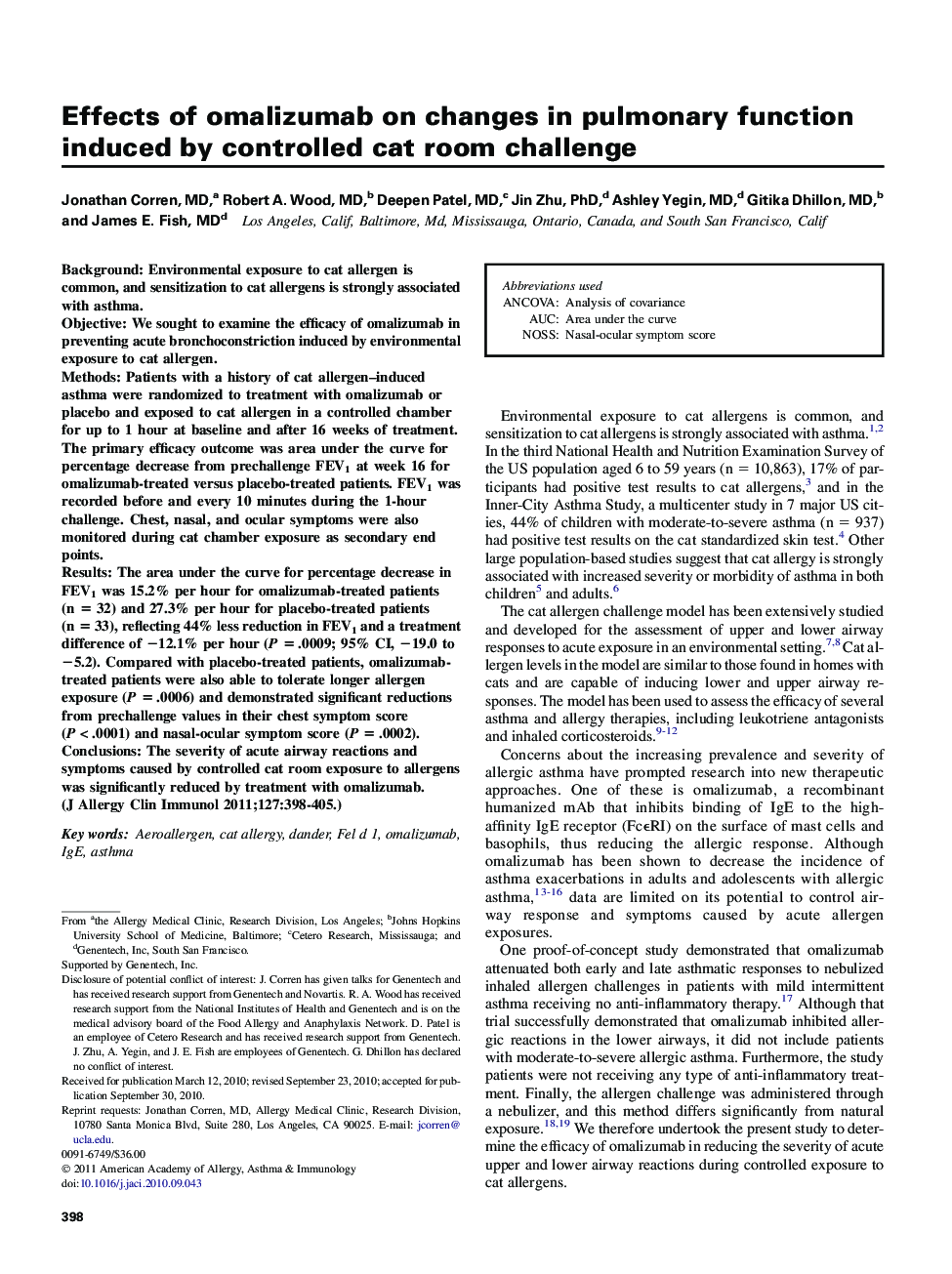| Article ID | Journal | Published Year | Pages | File Type |
|---|---|---|---|---|
| 3199832 | Journal of Allergy and Clinical Immunology | 2011 | 8 Pages |
BackgroundEnvironmental exposure to cat allergen is common, and sensitization to cat allergens is strongly associated with asthma.ObjectiveWe sought to examine the efficacy of omalizumab in preventing acute bronchoconstriction induced by environmental exposure to cat allergen.MethodsPatients with a history of cat allergen–induced asthma were randomized to treatment with omalizumab or placebo and exposed to cat allergen in a controlled chamber for up to 1 hour at baseline and after 16 weeks of treatment. The primary efficacy outcome was area under the curve for percentage decrease from prechallenge FEV1 at week 16 for omalizumab-treated versus placebo-treated patients. FEV1 was recorded before and every 10 minutes during the 1-hour challenge. Chest, nasal, and ocular symptoms were also monitored during cat chamber exposure as secondary end points.ResultsThe area under the curve for percentage decrease in FEV1 was 15.2% per hour for omalizumab-treated patients (n = 32) and 27.3% per hour for placebo-treated patients (n = 33), reflecting 44% less reduction in FEV1 and a treatment difference of −12.1% per hour (P = .0009; 95% CI, −19.0 to −5.2). Compared with placebo-treated patients, omalizumab-treated patients were also able to tolerate longer allergen exposure (P = .0006) and demonstrated significant reductions from prechallenge values in their chest symptom score (P < .0001) and nasal-ocular symptom score (P = .0002).ConclusionsThe severity of acute airway reactions and symptoms caused by controlled cat room exposure to allergens was significantly reduced by treatment with omalizumab.
